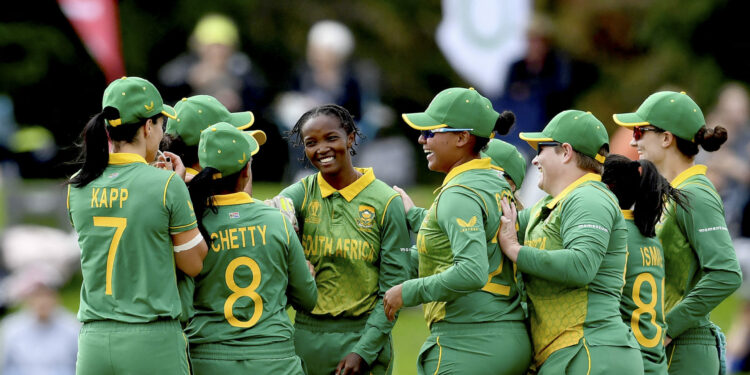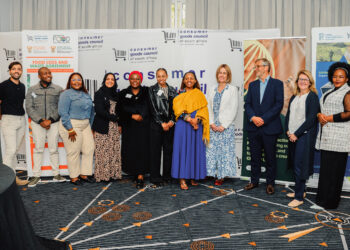In the first of a two-part series about the journey to become a member of the women’s senior national cricket team, the various challenges of development at school level are explored.
The past 18 months have been the most successful in the history of women’s cricket in South Africa. Under head coach Hilton Moreeng, in the job since 2012, and captain Dané van Niekerk, who has led the team since 2016, the Proteas have become a global force.
They have gone unbeaten in their last seven bilateral series and occupy second place on the one-day international (ODI) rankings list of the International Cricket Council (ICC). But for all their dash and daring, silverware eludes them. Two semifinal defeats – in the 2020 T20 World Cup and this year’s 50-over edition – is as high as this golden generation has climbed. Great teams are judged on the trophies they win. On that front this outfit has not achieved anything yet.
The vanguard is still sharp and well placed to make a charge for the 2023 T20 World Cup on home soil. Beyond that, though, the outlook is less optimistic. By the next 50-over World Cup in 2025, opening batter Lizelle Lee and Van Niekerk will be 33 and 32 respectively. Lee was recognised by the ICC as the best ODI player for 2021, while Van Niekerk was named among the five Cricketers of the Year by Wisden, the reference book published annually in the United Kingdom. Seamer Ayabonga Khaka will be 33, all-rounder Marizanne Kapp will be 35, and fast bowler Shabnim Ismail and wicketkeeper Trisha Chetty will both be 36.

The retirement of Mignon du Preez from Test and ODI cricket has put into focus the need to bolster the reserves and ensure that momentum is maintained for years to come. Though not alarming, there is cause for concern.
“To be honest with you, I wouldn’t bank on this golden generation being replicated instantly once it breaks up,” says Dinesha Devnarain, who played 51 matches for South African before retiring in 2013 and now works for Cricket South Africa (CSA) as the women’s Under-19 coach. “I don’t think our structures at the bottom allow for that to happen.”
Devnarain’s appointment is a sizeable step in the right direction. The ICC Under-19 Women’s T20 World Cup next year in South Africa will be the first of its kind and a full-time coach steering the team is proof that CSA is taking women’s cricket seriously. But changes are needed at every stage of the developmental pathway if the Proteas have any realistic designs on challenging the all-conquering Australians in future tournaments.
First faltering steps
Boys and girls more or less start on an equal footing in South Africa. The KFC Mini Cricket programme is the largest sporting development initiative in the country with 124 000 children between the ages of three and 12 participating every year. Some years there are more girls than boys playing with a soft ball under loose rules and with an emphasis on fun over results.
Once a hard ball is introduced and more structured guidelines are implemented, a gap between the sexes emerges and as many as 65% of girls abandon cricket once they move from primary school to high school. One major contributor to this is the infrastructural disparity in schools.
“The history and tradition of girls’ cricket in schools is a long way behind the boys’. In some places it’s practically non-existent,” says AJ Rudman, a national selector for the Under-19 and senior Proteas women’s sides, who has been a champion of women’s cricket for more than a decade. “It can feel like the boys and girls coming through the system are playing in different countries sometimes.”
Dean Elgar and Temba Bavuma, the Proteas men’s Test and white ball skippers, both owe a debt of gratitude to the top cricket schools in the country. Institutions like Bishops in Cape Town, King Edward VII School in Johannesburg and Grey High School in Gqeberha boast state-of-the-art facilities, level three coaches, deep talent pools from which to choose their best players and cricket histories that reach into the 19th century. It is on manicured pitches, aided by bowling machines and elite-grade equipment, that more than 90% of male Proteas have honed their craft since 1992.
“By comparison, girls’ schools don’t have a robust structure or league in place,” says Niels Momberg, CSA’s youth and tertiary cricket manager. “There should be more cricket played at the schools. It’s something we’re conscious of, but there are a number of factors that work against us.”
The first is a matter of willpower. Some of the most expensive and exclusive all-girls’ schools already have formidable reputations in other sports such as hockey, swimming, squash, tennis and netball. One CSA insider, who asked to remain anonymous, told of the numerous brick walls they had encountered when offering to grow cricket in these well-resourced schools. “They’re just not interested,” they said. “It’s not a question of funding. They have the money. They just don’t see cricket as something worth pursuing.”
There is also the question of space. Take Roedean in Johannesburg, or Herschel in Cape Town, for example. Founded in 1885 and 1922 respectively, these private all-girls’ schools were built with seemingly little consideration for outdoor activities given that their ivy-clad buildings are tightly wedged into residential areas. Not that the nearby all-boys’ schools of St John’s and Rondebosch have such challenges. There, budding cricketers have several pristine fields to advance their game.
A boys’ world
The rise of Dewald Brevis, though blessed with rare ability, points to the strength of boys’ school cricket in South Africa. The 19-year-old shone in his debut season in the Indian Premier League, smashing the world’s best bowlers with little concern for their reputation.
He was drafted into the game’s most expensive league after his performance in the ICC Under-19 World Cup earlier this year where he scored 506 runs in six innings at an average of 84.33. He has yet to play a first-class match and is a product of Pretoria’s Afrikaanse Hoër Seunskool, colloquially known as Affies and the alma mater of former Proteas captains AB de Villiers and Faf du Plessis.
According to Devnarain, not a single member of the Proteas women’s team has made it there because of her schooling. “In fact,” she says, “a lot of them made it despite where they went to school.”
“It’s a question of whether the schools want to play their role or not,” adds Rudman, who also serves as director of cricket at Steyn City School in northern Johannesburg and has cultivated a highly successful programme for girls. The school contributed 16 players to the most recent Under-16 and Under-19 Gauteng teams while eight have gone on to represent the Lions.

“We don’t need resources necessarily,” Rudman continues. “What we need is every head of sport to open their mind. When I arrived at Steyn City I told my boss that every sport would be equal among boys and girls. Whatever the boys got, the girls would get. They have a dedicated level three coach for the first team. We play a minimum of 40 games a year. Some of our competitors only play 20, if they’re lucky. We have three teams, most schools have two at most.
“It’s simple, really. People look at boys’ cricket in this country as something that is magic. We all get excited when a new player comes out of Durban High School or Pretoria Boys or wherever, but is it any surprise that that’s where they’re coming from? There are schools who can lead the way for girls. We’ve shown that it’s possible.”
Both Rudman and Momberg believe that the so-called traditional schools, such as St Mary’s in Johannesburg or St Anne’s in the KwaZulu-Natal Midlands, are unlikely to shift. “Maybe if you can convince one or two the rest might follow,” Rudman says. “But these monastic schools work together. They’re often aligned.”
Therefore, they place their hope in the co-ed schools that have proud sporting traditions in their own right, but are not as bound to their own self-styled legacy.
Not all bad news
There is one unexpected positive from all this. While the men’s game, with its over-reliance on talent groomed in elite schools, is plagued by class and racial inequality, the women’s pathway to the top is far more egalitarian.
“If you look at our national tournaments at age group levels, at least 75% of all of our boys who make it would have gone to one of the top schools,” Momberg explains. “It’s the opposite for girls. Close to 70% come from regional performance centres in rural parts of the country or in townships. A boy who goes to Alexandra High School, for example, has very little chance of making it. In a weird way, it’s maybe better in terms of opportunities for girls.”
If given the chance to wave a magic wand, Momberg, Rudman and Devnarain would all cast the same spell and increase the volume of girls’ cricket played in schools. They would like to see wealthier schools invest in cricket, but none of them considers this a prerequisite for success. After all, the current crop of Proteas have performed at the highest level without playing for an elite cricket school.
But the pool is shallow, and a greater network of schools can only help. Steyn City School has no genuine rival and there is a concern that all girls with ambitions to turn professional will coalesce at a single source. “Unless we can create an ecosystem where we have 10, 20, maybe even 30 schools that are all on our level, we’ll see a similar situation as in the men’s game where only a handful of schools attract all the talent,” Rudman says. “Then we’re just swapping one problem for another.”
Slow progress, however, is still progress. The Proteas’ stand-in captain, Suné Luus, had to play in the boys’ team at Hoërskool Menlopark in Pretoria as there was no girls cricket available. It’s difficult to imagine a South African skipper in 20 years’ time having a similar story to tell. Certainly not if CSA and those fighting for women’s cricket have their way.

















